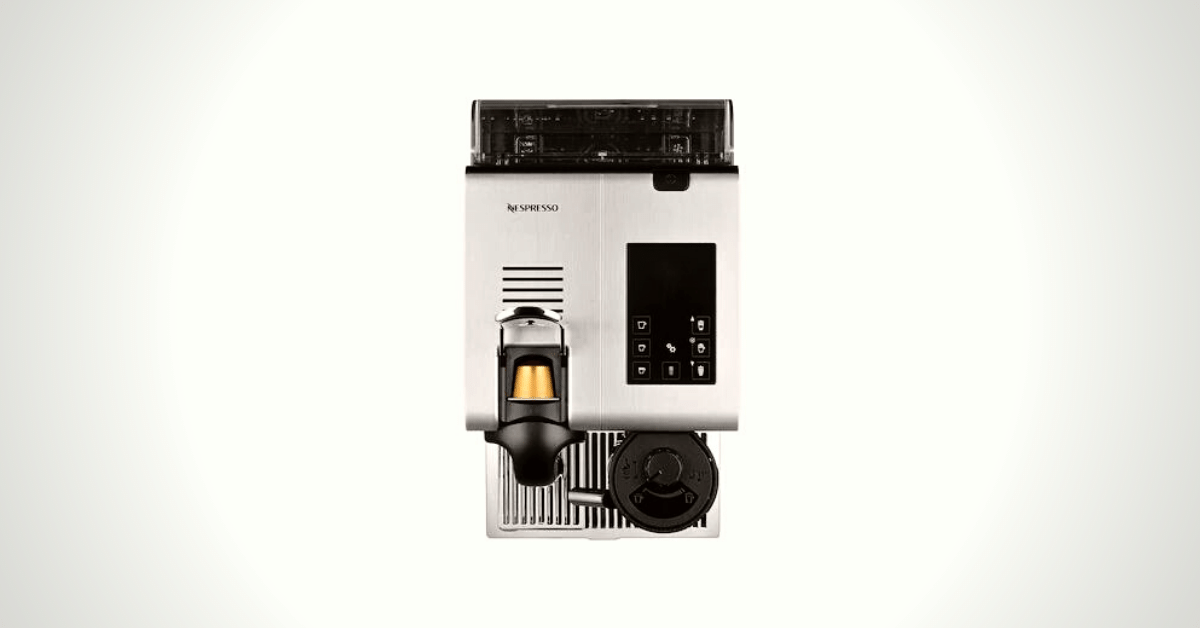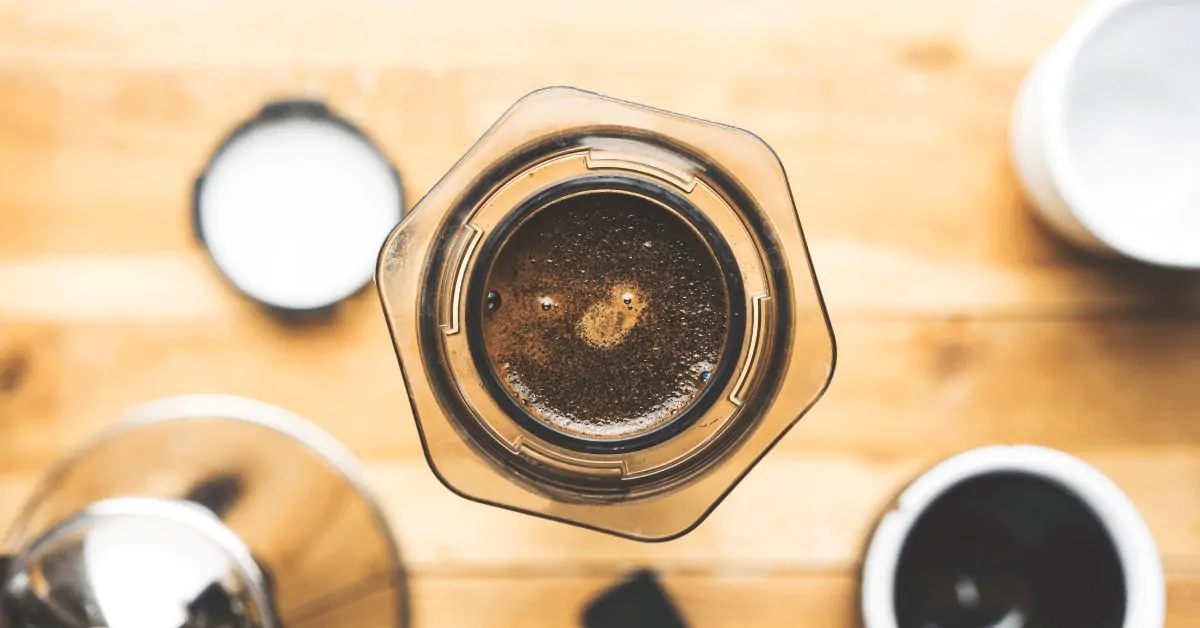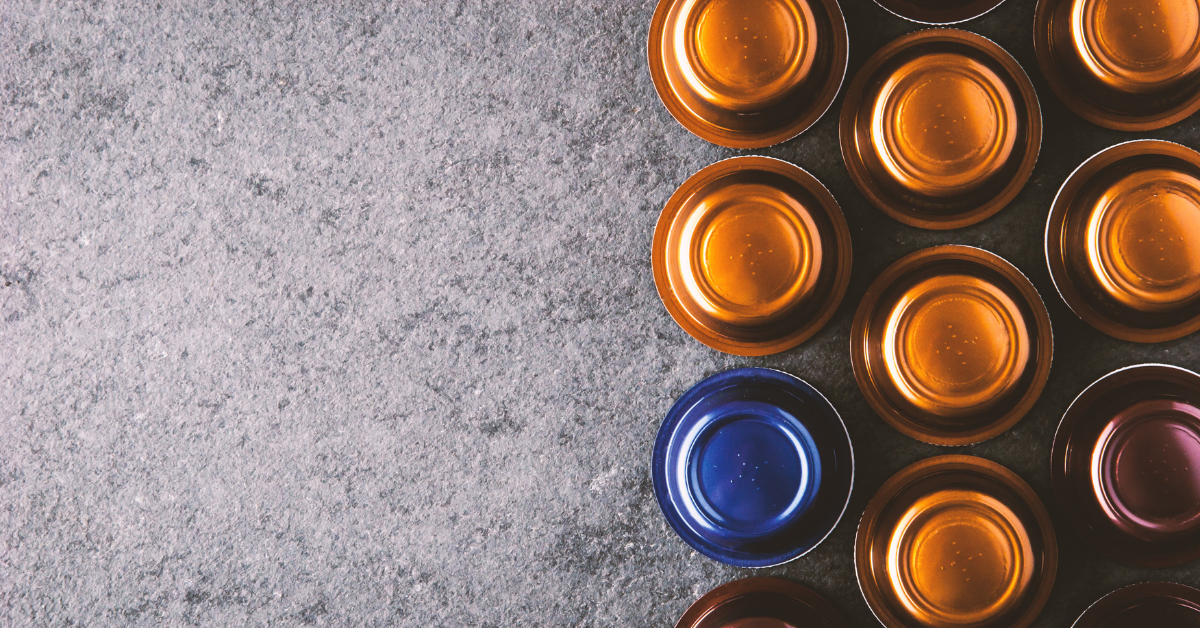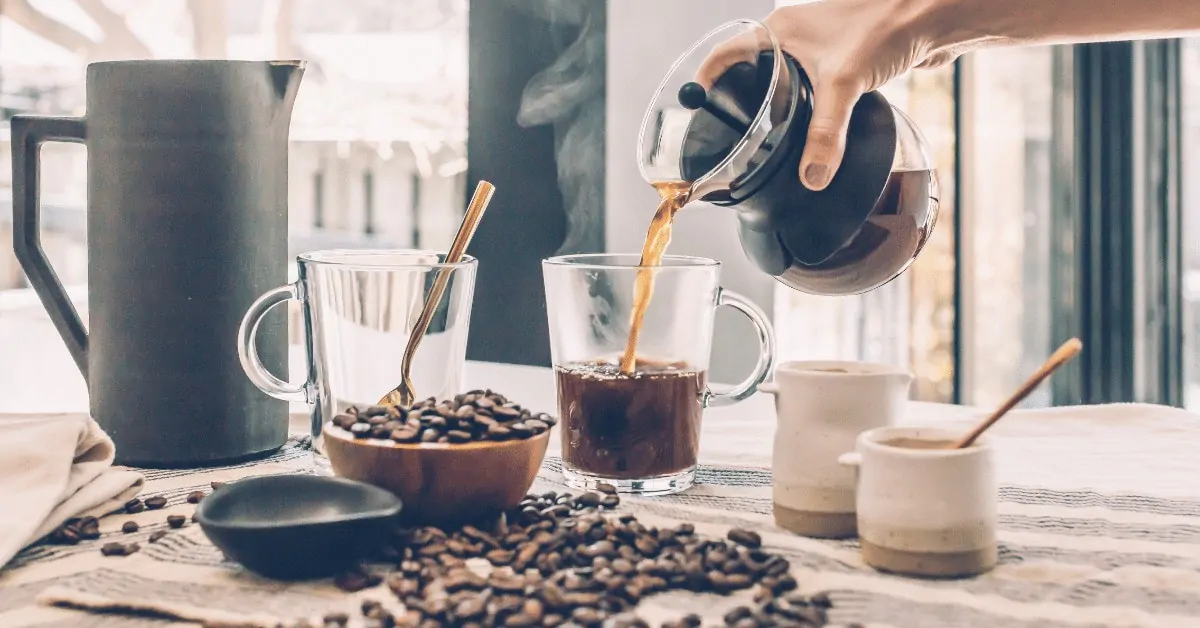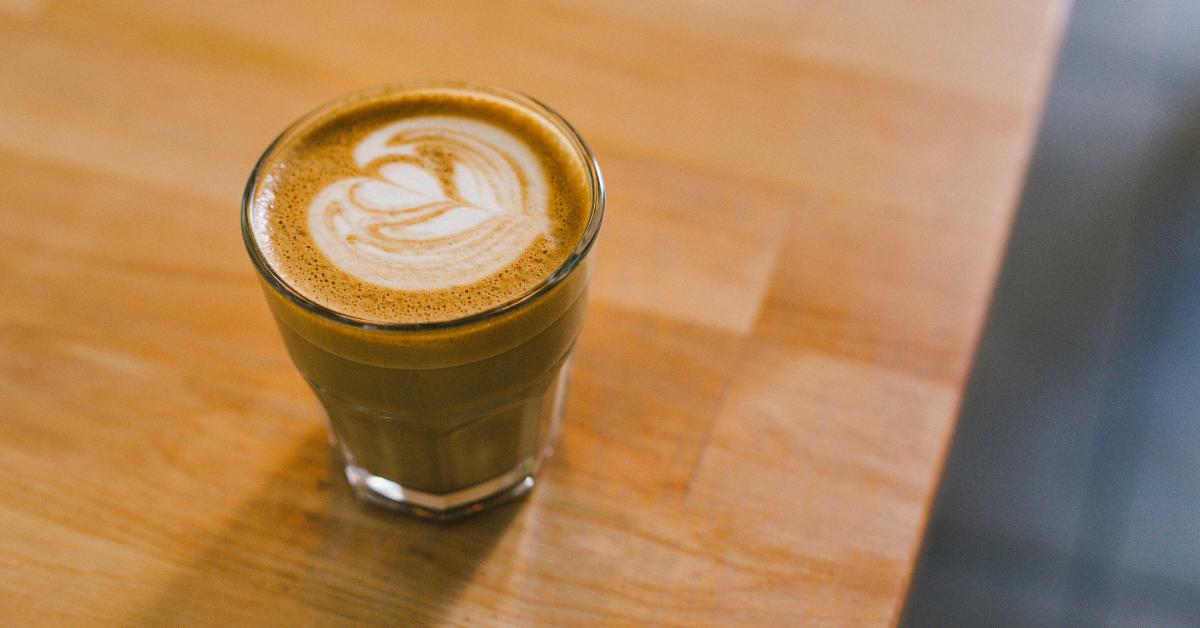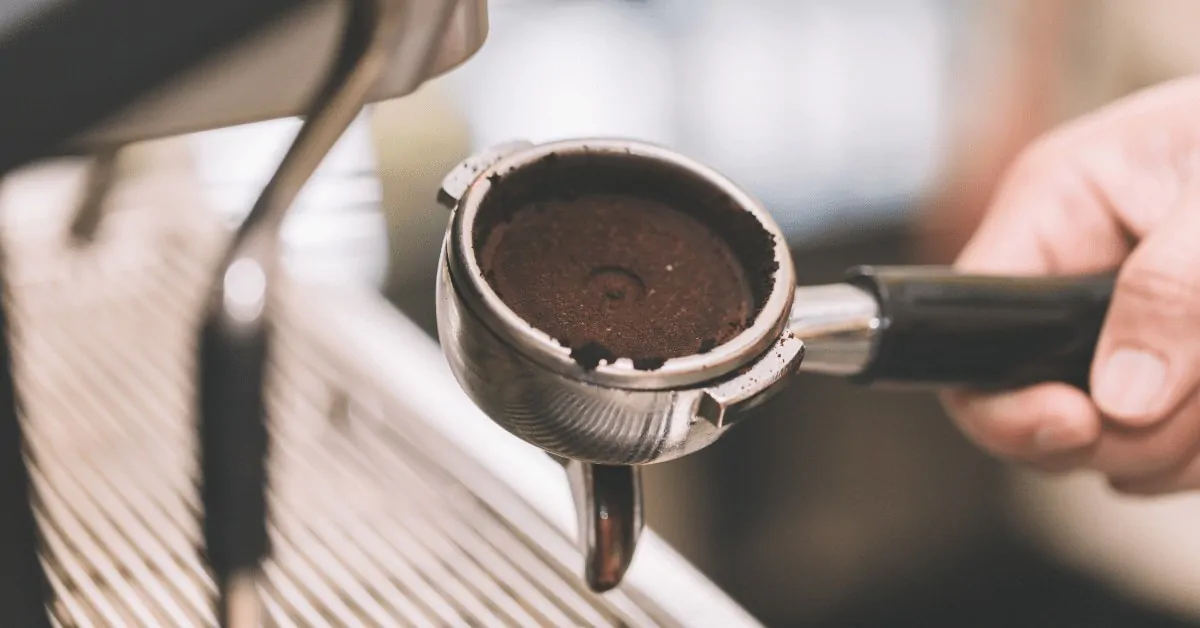Every coffee lover has a go-to method for brewing coffee in the morning. For me, it’s Chemex. For my sister, it’s the French Press.
Finding which type of coffee-making method is for you can be tough, however. And, with tons of coffee makers to choose from, that makes a choice even harder!
To help you figure out your coffee preferences, I’ve put together a list of popular types of coffee makers.
Here’s what to know about each one!
11 Types of Coffee Makers
Although there are more coffee makers than just these out there, let’s start with the basics.
Here are a few of the most common types of coffee makers that you might want to look into.
Pour-Over

Let’s start with the basics. As a coffee purist, this is one of my favorite ways to prepare a cup. They’re small, inexpensive, and result in tasty coffee.
A pour-over coffee maker is a device that is usually cone-shaped. These coffee makers work with a funnel-shaped filter that sits inside the cone. Hot water is slowly poured over ground coffee, hence its name.
Pour-over coffee makers are usually made of glass, but models are also available in plastic, steel, and ceramic.
There are actually three different types of pour-over devices:
- Flat bottom
- Cone shape
- Wedge shape
The most popular pour-over coffee makers are Chemex and Hario V60.
Regardless of which type you choose, the preparation method of pour-over coffee makers is infusion. To brew coffee this way, you’ll need to follow a few simple steps.
First, the ground coffee is placed inside the filter, and then hot water is poured over the top of it (you can use an electric kettle to boil the water). As the water hits the coffee, it dilutes the brew and filters down into your cup.
EXPERT TIP
In terms of the right type of coffee for pour-overs, you’ll want to stick to a light roast and a medium grind.
Drip Coffee Maker
Drip coffee makers are pretty much a staple in every American household.
The drip coffee maker is something like a pour-over coffee maker but electric and automated.
Despite those similarities, the flavor you get from an automatic drip coffee maker will differ from a pour-over coffee maker. Usually, drip makers have more mild, watery brews than a pour-over does.
The way this machine works is by heating up water automatically. Then, the coffee machine pulls water out of the tank and filters it over beans in an internal tank. The coffee is dripped into a glass or thermal carafe.
Like pour-overs, there are different filter shapes for these machines. Flat-bottom and cone-shaped tend to be the most common.
Another thing to think about is that you have a few different options in terms of which filter you’ll use with these machines:
- Stainless-steel mesh: results in an oilier yet more robust coffee.
- Paper filter: produces a cleaner-tasting coffee.
Whichever you go for, all you have to do to use the machine is add water to the water reservoir. Then, add a filter to the filter basket and place your beans in the machine. Switch on the coffee maker, and it’ll do the rest of the work!
EXPERT TIP
For a drip coffee maker, you want a medium roast and medium grind.
Aeropress
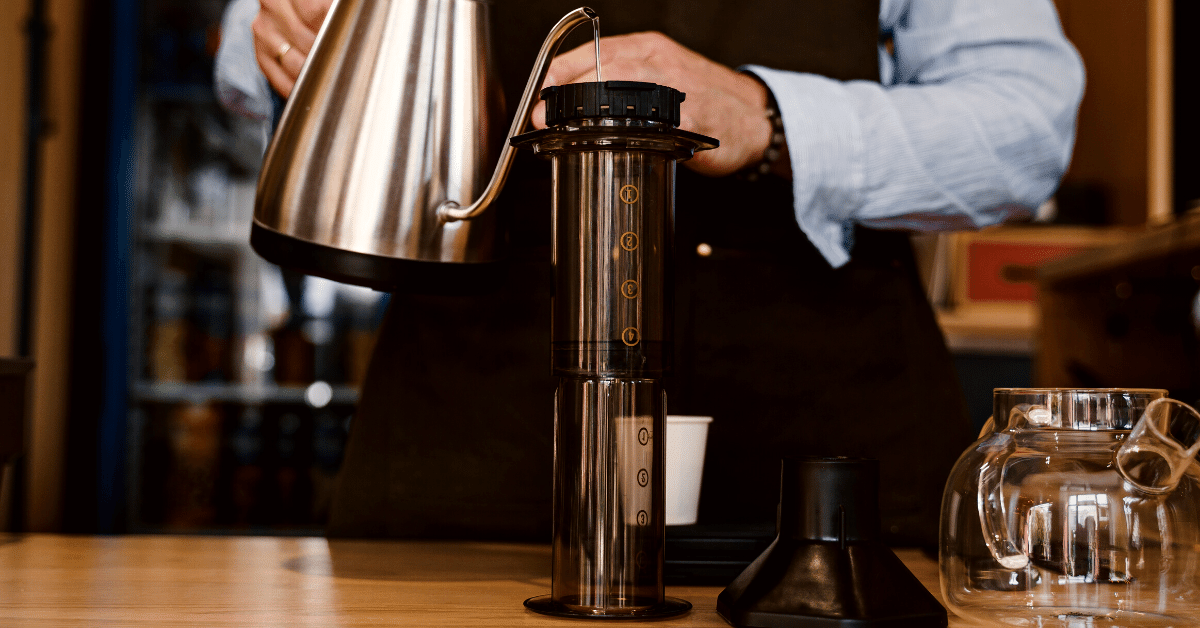
This type of coffee maker has become popular with baristas. An AeroPress coffee maker looks like a very large syringe, but don’t let that scare you!
You see, this machine is actually (in my opinion) a fantastic device for producing rich coffee. Plus, since it’s small, you can take it with you on the go.
The AeroPress uses air pressure (as the name implies) to brew coffee. The result of this coffee is oilier and with less sediment. What’s cool about it is that you can actually use it to make everything from espresso to cold brew coffee.
The AeroPress saves a lot of time as you can have a drink ready to go in just 60 seconds. One thing to note is that this coffee maker uses only paper filters.
Once you’re ready to brew a cup of coffee, just add the hot water, filter, and beans. Let the beans percolate for a few minutes before plunging down the water to produce a rich cup of coffee.
NOTE
This type of coffee maker is very practical because it doesn’t need a specific type of grinding. Although, baristas recommend using a medium-fine grind.
Moka Pot
The Moka Pot has an octagonal shape made from aluminum with plastic handles. Moka Pots have three main sections: water tank, coffee tank, and ground coffee holder.
Moka Pots are actually often used as alternatives to an espresso coffee maker. This is because they produce a full-bodied and flavorful coffee. Plus, they’re a lot more affordable than most espresso makers!
The best coffee for Moka pot is a dark roast because the machine will bring out those full-bodied flavors.
When it comes to the grind size, the fine grind is the best for the Moka pot.
A Moka Pot uses the boiling of water to get the pressure that is needed for the coffee to bubble up and filter into the upper container.
To use it, start by filling up the water tank on the bottom of the machine. Then, place the ground coffee in the coffee chamber.
Finally, screw on the top tank, which is a reservoir for the brewed coffee. Place the device on the stove and allow science to work its magic!
What will happen is that once the water starts to boil, steam inside the water chamber increases. This causes the water tank’s pressure to rise, pushing the boiling water up into the next chamber and forcing it through the coffee.
Finally, the coffee condenses and accumulates in the upper tank. From there, you’re ready to serve up a tasty beverage!
NOTE
Moka pots come in different sizes. You should consider how many cups you want to brew in one go before you choose the size.
Percolators

To put it in simple terms, a percolator is a kettle that has a system that makes the water drip through the coffee grounds when it boils. As you might have guessed, this process is known as percolation. The cycle repeats until the device is removed from the heat.
Percolators aren’t typically recommended for beginners. This is because some skill is required to properly use the device. If you don’t know how to use it, it could easily ruin the flavor of the coffee.
To use the device, you’ll want to add water to the bottom chamber and coffee to the middle chamber. Then, place the percolator over a heat source.
When the water in the lower chamber heats up, it passes through a tube. The tube feeds up into the middle chamber, filters through the ground coffee, and then drips back into the lower chamber.
What’s unique about these machines is that the percolation process is repeated over and over again, resulting in very strong coffee. The beans could be over-extracted if you leave the percolator for too long. This will result in an unpleasant smell and bitter coffee.
Like a Moka Pot, these devices work with heat. However, percolators work with gravity, while Moka Pots work with pressure.
EXPERT TIP
Moka pots come in different sizes. You should consider how many cups you want to brew in one go before you choose the size.m The ideal grind for a percolator is medium-coarse.
French Press
The French Press is a manual coffee maker that works by directly immersing ground coffee in hot water. Thanks to this, it’s possible to have greater control over the extracted oils.
French press coffee maker produces a full-bodied coffee with a complex aroma. You’ll typically need coarse, medium roast beans to get a great brew.
French Presses are made of two parts:
- A metal, glass, or plastic chamber
- A metal filter attached to a plunger
In terms of the preparation method, you won’t have to do a ton of work.
To use the device, simply add ground coffee to the French Press. Then, add hot water.
Allow the coffee grounds to stay fully submerged in hot water for between 3 and 5 minutes.
Then, use the French Press filter to push downwards through the water. This forces the coffee grounds to the bottom of the device, separating them from the new water.
Pour the coffee into your cup and get ready to enjoy the flavors!
Siphon

Siphon coffee makers are also known as vacuum coffee makers. It has two chambers, one is to put the water in, and the other is to place the ground coffee beans. The two parts are connected by a tube.
This coffee maker uses a slightly lower temperature than other methods. The result is that the flavor of the coffee beans is not extracted as much, and you get a more delicate brew.
Siphon coffee maker looks very aesthetic, which is partly why it’s started to become so popular. Despite their fancy appearance, these machines are actually pretty easy to use.
To use this device, you’ll need a medium grind, medium roast coffee. Add the coffee to the round jug on the device.
Then, add water to the bottom section of the jug. Next, heat the jug from underneath, causing the water to turn into steam and rise into the coffee chamber.
Once the steam rises, it condenses back into water and filters back down through the coffee beans.
Finish off your brew cycle by serving up a cup of coffee!
NOTE
This brewing method can take a bit longer than other devices. Still, you’ll get a smooth cup of coffee. And, thanks to its fine filter, you’ll have less coffee waste to clean up.
Espresso Machines
If your favorite type of coffee is a latte or cappuccino, you will want to invest in an espresso machine.
Espresso machines work by forcing water through finely-ground coffee at high pressure. The result is a super smooth, concentrated coffee drink.

There are three main types of espresso machines:
- Manual espresso machines
- Semi-automatic espresso machines
- Fully automatic espresso machines
Manual espresso machines can be electric or not. Either way, with these machines, the barista has to control all aspects of the brew cycle.
These machines use a lever or hand pump to push water through the ground coffee beans. The water will have to be heated separately if it’s not electric.
This kind of espresso maker is used primarily by experts, as it’s somewhat tricky to master if you want a perfect espresso.
Semi-automatic machines are much simpler. With these machines, you’re in control of the grinding and water level, but that’s about it.
The machine will do the work of exerting pressure on the beans to produce a smooth cup of espresso.
Finally, there are the fully-automatic espresso machines. With these machines, the device handles the grinding, brewing, and even milk steaming.
They include a frother and produce a variety of drinks, although it may take you some time to get the hang of them if you are a beginner coffee drinker.
Pod Coffee Makers
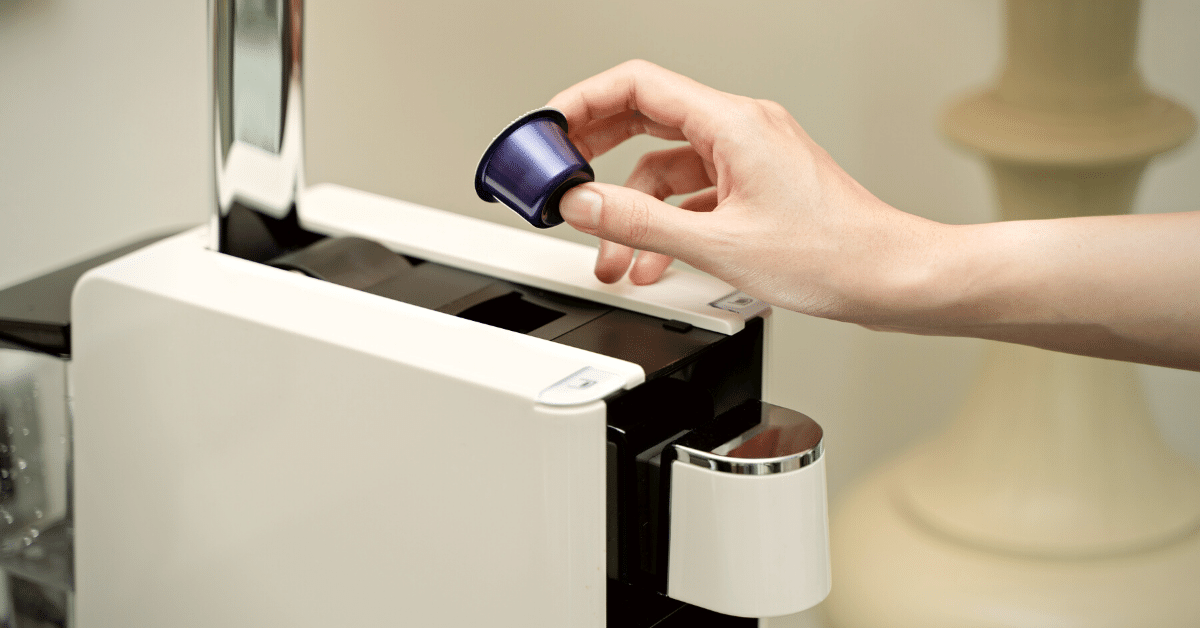
Also known as a single serve coffee maker, a pod coffee maker is designed to prepare one cup of coffee at a time. They use a drip method but on a smaller scale.
Pod coffee makers work by having the user insert a capsule (coffee pod) that contains a predetermined amount of coffee.
To use the machine:
- fill the water reservoir
- add a capsule to the pod chamber
- hit the start button and let the coffee machine work its magic!
With these coffee makers, you will get coffee with an intense flavor. But, it won’t taste as good as other methods because you don’t use fresh coffee beans.
The good side is that the coffee pods contain the exact measure of ground coffee that you need for a particular brew, so there is no need for guesswork.
Also, they usually come from a good roaster, and there is a large variety of different roasts and origins to choose from.
Unfortunately, these machines produce quite a bit of waste. What’s worse is that most of the waste from these capsules is not recyclable, which greatly affects the environmental impact.
Despite the fact that the machines are convenient and easy to use, this environmental aspect can make them a poor choice of machine.
Vietnamese Coffee Maker
Vietnamese coffee makers are one of the devices I more recently discovered on my coffee journey. These coffee makers are also known as Phin coffee makers and have several peculiarities.
In a few words, it’s an individual, single-serve, handheld coffee maker. This device is placed on the cup and consists of four parts: the container, the plunger, the filter, and the lid.
It usually uses a heat-insulating handle or insurance to prevent burns. I could say that a Vietnamese coffee maker is a combination of a drip machine and a French Press.
To prepare a cup of coffee with this machine, you’ll use an infusion method.
All you need to do is:
- place your cup beneath the device
- add the medium or medium-coarse ground coffee to the container
- tamp down the coffee using the filter
- pour water over the grounds
- allow the coffee to sit for a few minutes, and drip into your cup
The resulting coffee has a strong flavor and pairs well with milk or sugar.
TIP
If you want a really traditional, Vietnamese brew, add a tablespoon of condensed milk!
Cold Brew Coffee Makers
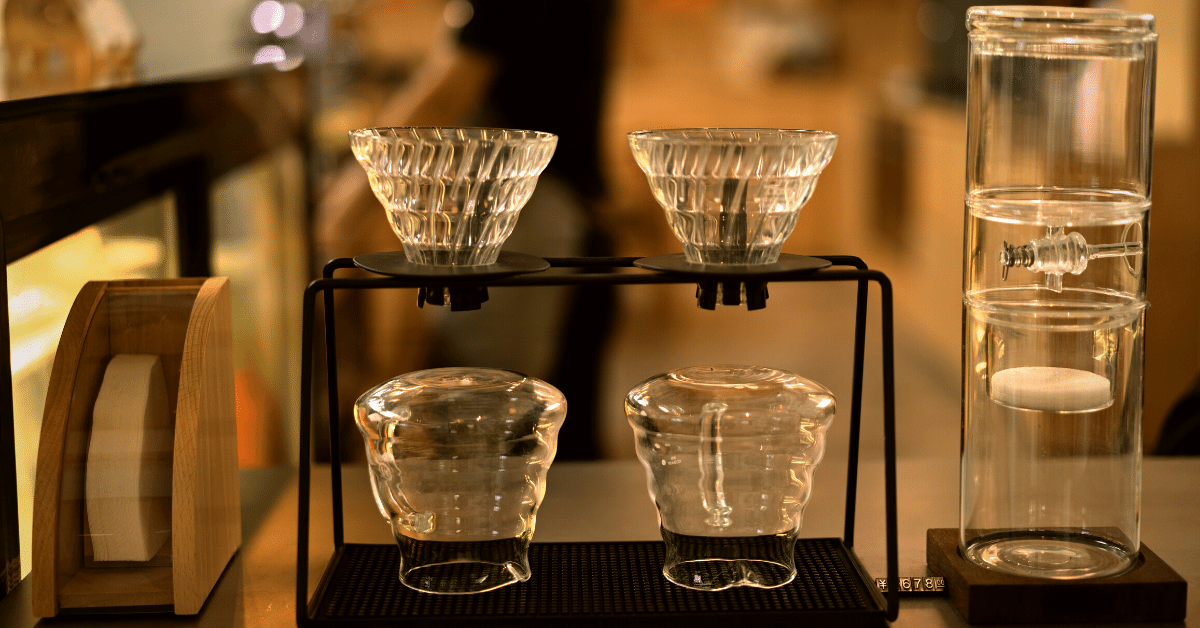
Cold brew coffee makers have been gaining popularity lately, but they only work for people who have patience. That squarely rules me out!
These cold brew coffee makers result in low acidity and a good body.
Cold Brew coffee is great for making iced coffee, but you can also heat it up if you like it hot.
On the market, you’ll find two types of cold brew coffee makers: one for the immersion method and the other for the drip method.
The grind for this type of coffee brewing method is coarse.
The immersion method cold brew coffee maker works much like a French Press. Basically, you’ll immerse coffee in cold water for 12 to 24 hours. This will carry out the brewing process and extract all the flavors from the beans.
The coffee maker should be kept in the refrigerator during the entire brewing cycle.
With the drip method, you’ll simply drip cold water over ground coffee and allow the water to filter down into a basin. Once again, this method takes between 12 and 24 hours to achieve its full flavor.
NOTE
The beverage can be stored in the refrigerator for at least 14 days and can even be used as a concentrate for hot coffee.
Conclusion
There are tons of different types of coffee makers out there, and the one you choose will depend a lot on your drinking preferences.
Although there’s really no hard and fast rule to which you should use, experimenting can be a great way to figure out how you like your coffee.
Decided that it’s an espresso machine you’re after? Check out our guide to the best espresso machine for beginners to get you started!



